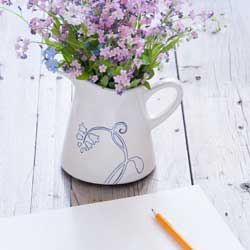Do you remember exactly when you planted your seedlings last year? What was the date of the first frost? Did you see a unique cultivar at the nursery and wanted to give it a try? How well did that new pest-control technique work on your prize flowerbed? Whether you are recording your landscape, a vegetable garden or both, the details make the difference, and a garden journal can help you keep track of those details to build on your own gardening expertise.
What to Record
A garden journal does not have to be intimidating, and you do not have to be either an expert writer or an expert gardener to keep one. You are simply keeping record of your garden and notes on what worked, what didn’t, want you wanted to try, what you wanted to change and more. You might keep one journal just for your landscape, another for your vegetable garden, even one for an indoor herb garden. Depending on the journal type, you may record different things in different ways, but don’t worry – it’s your journal and you can keep it however you want.
- Your Landscaping Garden Journal
Use a journal to record your landscaping activities. A simple sketch of your landscape provides a basic plan. Track the dates of planting and blooming, fertilizer applications, pruning and other maintenance duties to determine if the activities are worthwhile and effective. Map the placement of bulbs and perennials so you don’t have to remember over the long season when they disappear. Note your color combinations. Did they look good or was something missing? Maybe you saw an article with some ideas to try, so tuck it in and remember try it. - Your Vegetable Garden Journal
A journal can help you keep notes about your vegetable garden. Use graph paper to design your plantings. Next year you can use this sketch to plan your veggie rotation to keep your soil rich and your harvest productive. Note the dates of pest treatments, fertilization, thinning and other activities. By recording the details in a garden journal, it serves as your memory, reminding you what you planted, how it did and what you could do better and easier. Wouldn’t it be nice, at the end of the season, to see how much money you saved by growing your own produce? Keeping track of expenses and harvest quality will do it. - Your Indoor Garden Journal
Whether you just have a few houseplants, a simple windowsill herb garden or an elaborate setup for starting seedlings, you can use a journal to keep track of all your plants. Note when you add new plants to your displays, the frequency of watering, foliage changes, bloom cycles and herb harvesting. Note seasonal changes in your plants, and when it is necessary to repot.
A garden journal provides a great place to save sketches, lists and photos. Depending upon your personal use, they can store excess seeds and plant tags, bed rotation and fertilizing schedules, even gardening brochures.
Now is a perfect time to start a garden journal. You’ve been cooped up in the house during the long winter and probably have lots of ideas about the upcoming garden. Beginning a garden journal now ignites your creativity, sets your goals for the upcoming year and lets you plot your upcoming journey. Twelve months from now, when you look back and review your goals and plans, you’ll see how much you’ve done. Then, you can look forward to the next year and make a great plan, thanks to the notes you’ve kept.
Come see our assortment of garden journals. Whether you prefer loose-leaf or bound, simple lined paper or adorned with sketches, we have just the right garden journal to get you excited about the upcoming gardening season.





